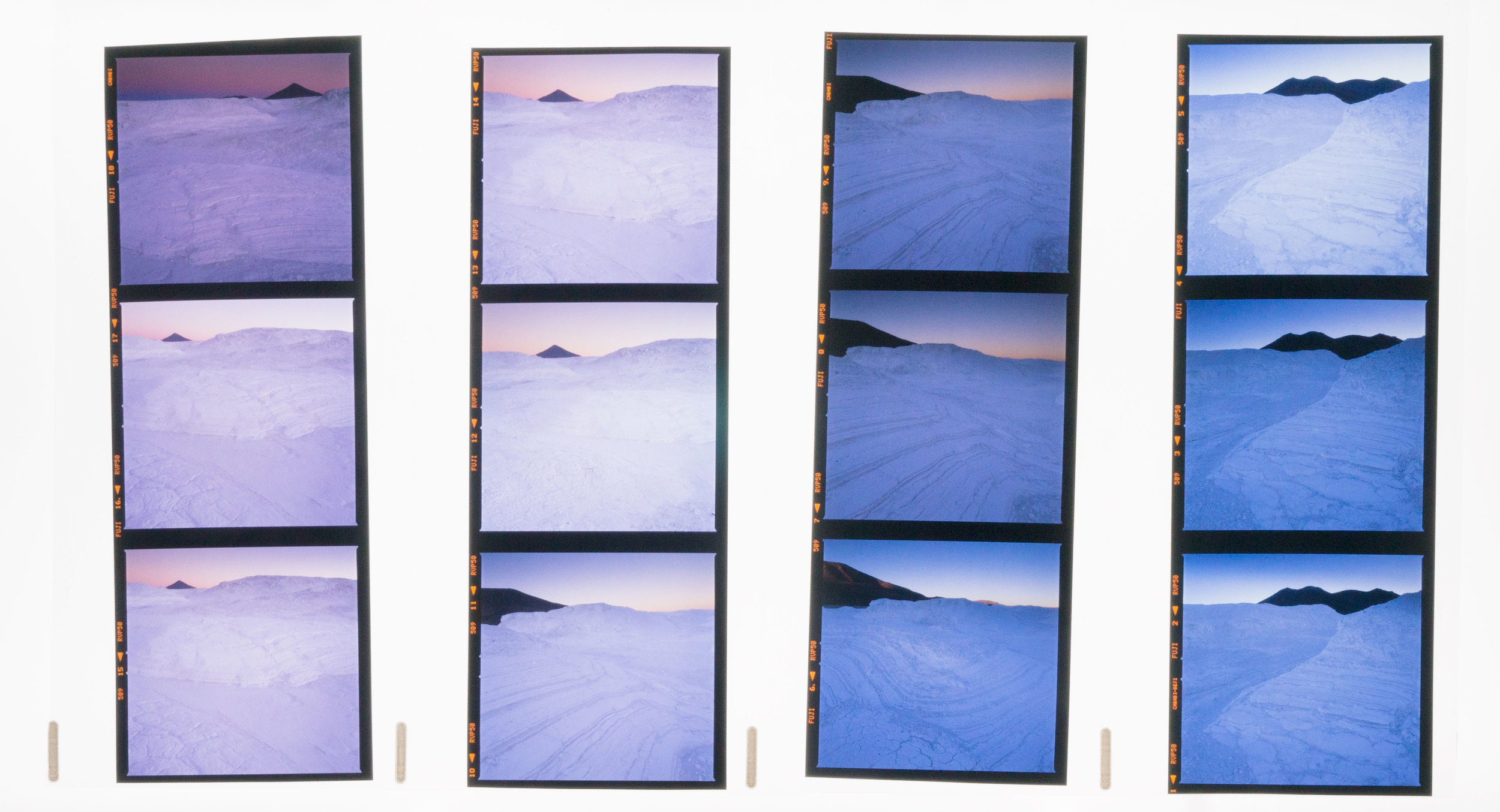A good friend of mine recently asked me how many good images I shoot on a roll of film.
I can fully appreciate that it's just very interesting to know how often a photographer reaches success with his images - it might give an indication to the skill of the photographer, but it might not.
In my own case, I shoot a lot. And I'm very selective about what gets published.
Borax field, Bolivian Altiplano, © Bruce Percy 2017
I don't think we should focus too much on how successful we are. Simply because I believe that experimentation is an important ingredient in the creative process and by definition, experimentation means being open to trying different things without fear of failure.
Let's consider that experimentation actually means. If you are experimenting, it means you don't quite know what the outcome will be like. This means that it could be somewhere between two extreme possibilities: a success or a failure. There's too much emphasis on failure being a bad thing. I think failure is a positive thing because you have to find out what you don't want to figure out where you need to go.
Indeed, I find that when I look back at my rolls of films, each roll is a chronological record of me working a scene. Take the transparencies shown below. There are four strips from one roll all laid out from start to finish from left to right. You can see that as the shoot proceeded I went from sunset to twilight.
If we analyse what I was doing, I think the roll of film breaks down to two major compositions. The first composition is using the peak of a volcano as a black triangle on the ridge of a borax field (it's not snow - this was shot in Bolivia). You can see I try the volcano peak on the right side of the frame at different focal lengths (it's bigger in the first shot and smaller in the next two). I then settle for the volcano peak on the left side of the frame.
The 2nd composition is really about the black hillside in the distance. Again you can see I place the black hill in the background on different sides of the frame.
There is a theme going on with both compositions: I'm using a stark black object to frame against the white borax - these images are exploiting the tonal difference between black volcanos and hills against white borax.
A roll of processed 120 Velvia film, showing you the chronological sequence that the images were shot in.
The other thing to notice is that I am doing small shifts in the image sequence - changing the foreground slightly or using a different focal length to make the small volcano bigger in the frame.
I like to explore a scene, and take different compositions with different focal lengths. On the surface it may seem as if I'm making the same photo again and again, but I'm really looking for a perfect scene and this is the most important point: I have given myself permission to experiment.
When it comes down to the final edit, I think there are perhaps two images in this roll of film that I will compete and be happy with. I don't view the others as wastage of film, or failures: everything I've shot contributes to the final result. Consider them prototypes, or whatever, they all contribute to where I finally end up.
So with that in mind, I think 'hit-rate' is rather unimportant.
Shoot when you feel you need to shoot, consider if you are changing anything in the composition each time you click the shutter rather than just endlessly repeating the same shot, think about what might make the image stronger or weaker if you change something.
Borax field, Bolivian Altiplano, © Bruce Percy 2017
I think I am always shooting variations on a theme. Once I find my main composition, I will take around four or even an entire roll of film working the scene, experimenting, because I can't be a good judge of what I've shot until I get home, I'd therefore like to try out as many possibilities as I can. And that means discarding the thought of how many successful images I've made. It's really quite irrelevant.
Keep on experimenting and being open to trying new things. By it's very definition, experimentation means you don't really know the outcome of what you're doing. To truly experiment you have to be open to failure, because if you aren't open to failure, then you aren't experimenting. If you aren't experimenting, then you aren't growing.



